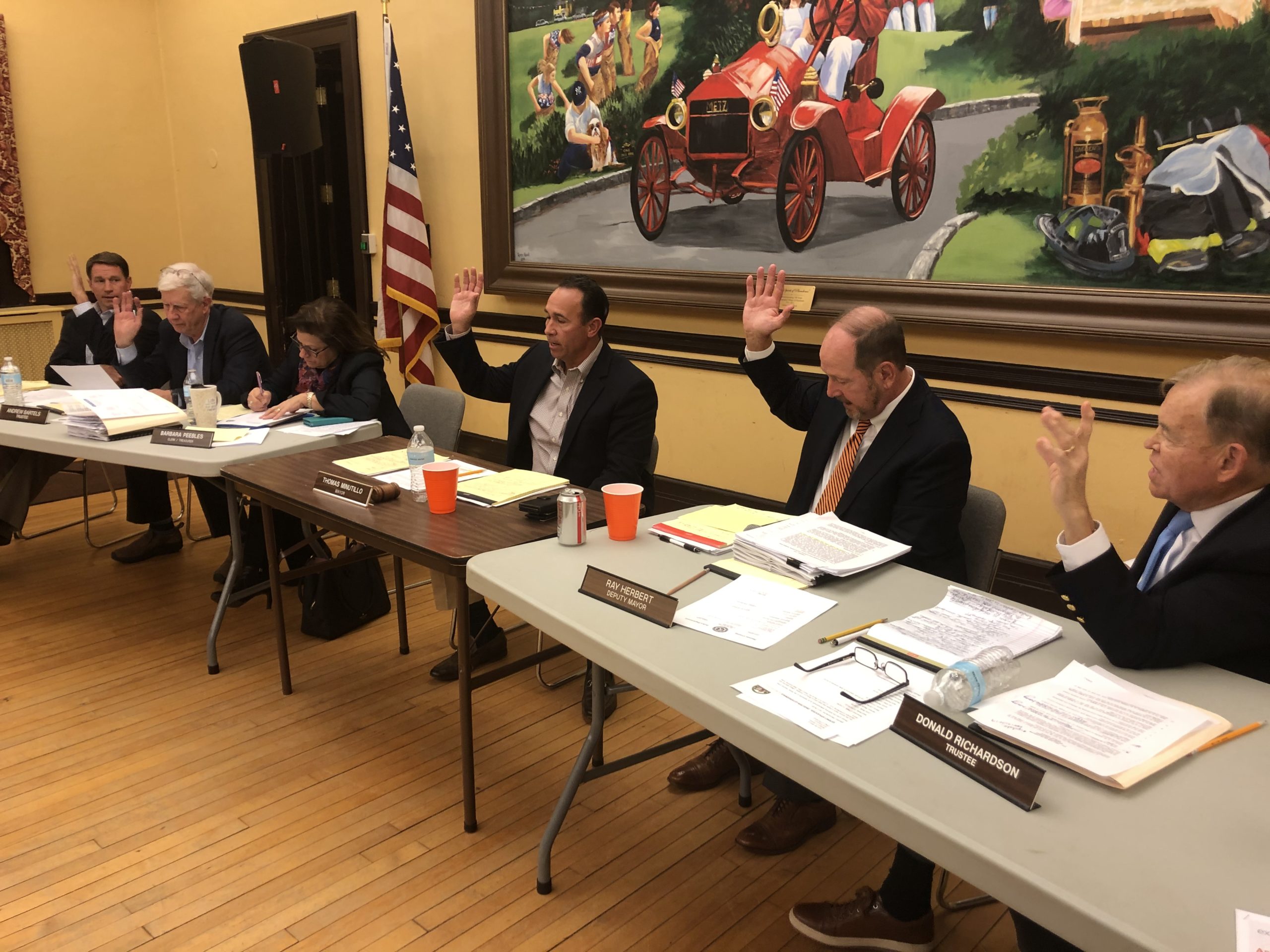Plandome’s Board of Trustees unanimously voted to reject eight applications for 4G cell nodes in the village at a meeting Monday in the wake of universal pushback from residents on aesthetics and locations.
ExteNet, an Illinois-based system constructor, had been hired by Verizon Wireless to build cell nodes in municipalities across the North Shore. Federal Communications Commission regulations do not allow municipalities to block nodes, while they are allowed to negotiate on grounds of aesthetics and location, but not other factors like health concerns.
Over 50 members of the community gathered to voice objections in the three hours leading up to the vote, with dozens more having spoken at meetings in the past six months.
“Clearly, we’re united in all the negative effects that we’ll have on this community,” resident Jackie Nastos said. “Plandome residents will not suffer any hardships by the lack of these nodes.”
Referring to the ongoing litigation between ExteNet and the Village of Flower Hill, which denied 18 proposed cell nodes and will see both parties in conference with a Brooklyn judge on Dec. 10, many speakers said that they would encourage the village to reject the nodes even if it meant a court case, including 40-year resident Michelle Tempesta.
“If there’s a lawsuit, you can raise my taxes and I will contribute to the legal fees,” Tempesta said, to applause from the audience.
Resident Elaine Goodwin concurred with Tempesta.
“This isn’t about the fastest legal path out of here, you need to represent the people here,” Goodwin said. “We know it will take time and money for litigation. But this vote you are making will be your legacy, and it could mean your last round on the board here.”
Representatives from ExteNet, led by Richard Lambert, regional director of the company’s external relations in the East, discussed details of the plan before the public hearing. Lambert said that poles had been relocated or partly redesigned after hearing feedback on aesthetics and locations at previous meetings.
“Discussions hinged on a few node moves,” Lambert said, pointing out several node movements.
“With the new poles, everything is inside, all the equipment will be located inside the pole so you won’t seen any in antenna, or any infrastructure outside the pole,” Lambert said.
While the FCC has ruled that municipalities cannot reject the nodes for health reasons, residents still brought up health concerns in their statements to the trustees.
Former resident Doug Woods, who currently resides in Port Washington and serves as associate director of the Port-based Grassroots Environmental Education, took issue with a lack of environmental disclosures, including those required under the National Environmental Policy Act (NEPA). Attorney Anthony Lepore of the Florida-based Cityscapes Consultants, which was hired as a consultant by the village in the matter of the nodes, replied that the nodes were exempt under FCC rules.
“If it’s under 10 meters and under 1,000 watts for certain spectrums, or under 2,000 watts for other spectrums, then the analysis does not need to be undertaken,” Lepore said.
Lepore also confirmed that the analyses were “not obligated to include health impacts,” as they were categorically excluded from NEPA under the FCC’s interpretation.
Before the vote, Trustee Andrew Bartels said that he would honor the residents’ wishes, but warned that the federal regulations may still mean nodes in the future.
“I hate the situation we’re in,” Bartels said. “The FCC, especially with its three Republican appointees, has put us in a position where local governments are severely limited in what they can do. At the same time, I hear loud and clear that you don’t want this, and I’m inclined to honor that, but I also want it understood that we will do our best to make a case for why it should be rejected, but at the end of the day it’s very possible and probable that we will have something here, in spite of our best efforts.”
Mayor Tom Minutillo noted that he shared his residents’ concerns.
“My thoughts on all this are very much in line with everybody here. I think it is incompatible with the landscape of Plandome,” Minutillo said.
Village Justice Jim Kiley, whose home was to border proposed node 53 at the end of Woodedge Road, led a majority of the residents’ protests.
“I’m very pleased that the board had the courage to vote no on the applications,” Kiley said in an interview. “I think it’s the right thing to do. We do have a lot of concerns with regards to aesthetics and location, and I’d like to see balloons put up so people can see exactly where these would go.”
Two proposed stealth nodes, marked as 42 and 46 and located near the southern end of The Ridge and near the east end of North Drive on the proposed ExteNet map, will be voted on at a village meeting in January.
A call to ExteNet’s legal department was not immediately returned.



